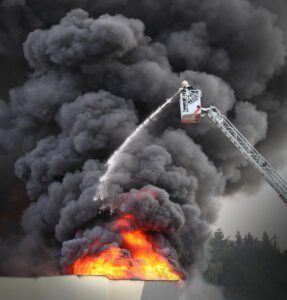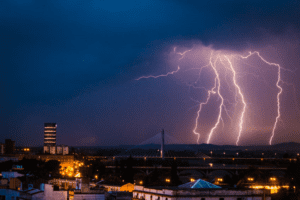This week’s news of yet another cruise ship fire, with images of a blackened ship sitting in port, prompted me to revisit my post of a few months ago about a similar incident that, it turns out, wasn’t all that similar. In the process, however, I learned that Carnival Cruise Lines has apparently learned its lesson, albeit the hard way.
Let’s start with the most recent event, a fire that broke out in the wee hours of the morning on Monday, May 27, aboard Royal Caribbean’s Grandeur of the Seas. As photos clearly show, the stern of the ship was badly damaged, yet its 2,200 passengers experienced nothing like what those on the Carnival cruise did. As Time reports:
The ship, which left Baltimore on Friday for a seven-night cruise, was headed originally to CocoCay, Bahamas. Royal Caribbean said the ship never lost power and was able to sail into port in Freeport, Bahamas, Monday afternoon.
It appears Royal Caribbean handled this about as well as it could. It had emergency preparations in place and followed them well, kept passengers informed of what was going on and ultimately chartered flights for all passengers. It also gave each a full refund, of course, and a certificate for a future cruise. Not bad, although I’m not sure anything can make up for a lost vacation.
The key difference in this case as compared to the Carnival Triumph disaster in February was, as Time reported, that the Royal Caribbean ship never lost power. The Triumph, on the other hand, not only couldn’t sail under its own power but it didn’t have enough emergency backup to power air conditioners, lots of toilets didn’t function, cooks couldn’t cook and well, you get the picture.
In my previous post, I took Carnival to task for the lack of adequate emergency backup power, noting that such systems do exist for cruise ships just as they do for data centers. Apparently, Carnival is now seeing the light. As USA Today reported in April:
Carnival Cruise Lines will spend more than $300 million dollars to upgrade its ships to prevent a repeat of what happened on the Carnival Triumph.
The fleet-wide overhaul at the world’s largest cruise operator will include a significant enhancement of emergency power capabilities on all 24 Carnival vessels as well as changes that will add more redundancy to operating systems, the line announced today.
The story goes on to quote Gerry Cahill, Carnival’s CEO and to further explain the upgrades:
“Most of what you’re seeing here today is making sure that we don’t lose propulsion power (on a ship) in the future,” and in the case that power is lost, passenger comfort isn’t compromised.
Carnival says it already has begun rapid implementation of the improvements. An initial increase in emergency generator power on all of its ships will be completed over the next several months. The company is adding an additional emergency generator to every vessel that will provide for the operation of all toilets in cabins and public areas; fresh water; and elevators in the event of a loss of main power. The work is being done as the ships are underway, and is not affecting ship schedules.
Carnival also will install a second, permanent back-up power system on each of its ships to provide for additional services including expanded cooking facilities, cold food storage and Internet communications if main power is lost.
So we’re talking generators to ensure ships maintain propulsion power, that toilets work, food doesn’t spoil and chefs can cook. Now that’s more like it.
As I mentioned in my previous post, data center operators learned these sorts of lessons long ago. Still, it’s good that other industries are catching up.



